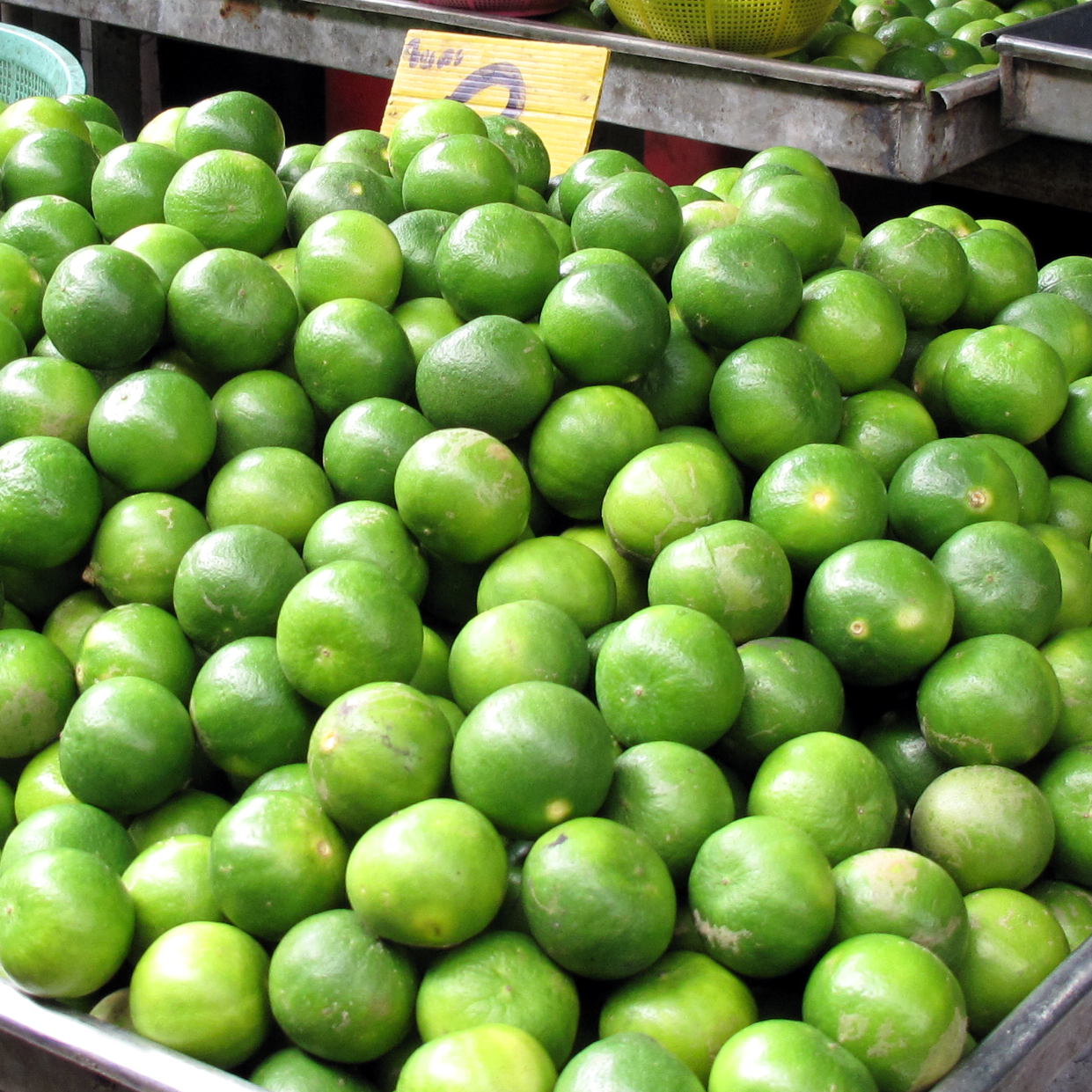Limes are available in great abundance all year round, and are used in a number of dishes to provide sourness, which is one of the four basic tastes that every dish attempts to balance (the other three tastes are spicy, salty and sweet.) Some people translate the Thai word manao as “lemon” but since the skin of the Thai citrus fruit is mostly dark green, I prefer to call them limes. Thai limes are almost perfectly round in shape, rather than oblong like a lemon. The skin is quite thin, making it hard to zest.

So extensive is the use of fresh lime juice in cooking that the stalls usually sell them by the dozen, while the owners of food stalls may purchase a bag holding three or four dozen from the wholesale market. A dozen limes will usually cost around 25 U.S. cents. Such is the importance of limes to Thais that an M.P. felt it necessary to bring to parliament’s attention the fact that the price of limes had exceeded nine Baht (about 30 U.S. cents) during Thailand’s boom years.
In addition to using the juice as an ingredient, many noodle and fried rice dishes are served with a lime wedge as one of the condiments. A squeeze of fresh lime juice over fried rice may not sound delicious, but the taste is quite good.
Limes originated around the Malay peninsula, where they have been cultivated since pre-history.